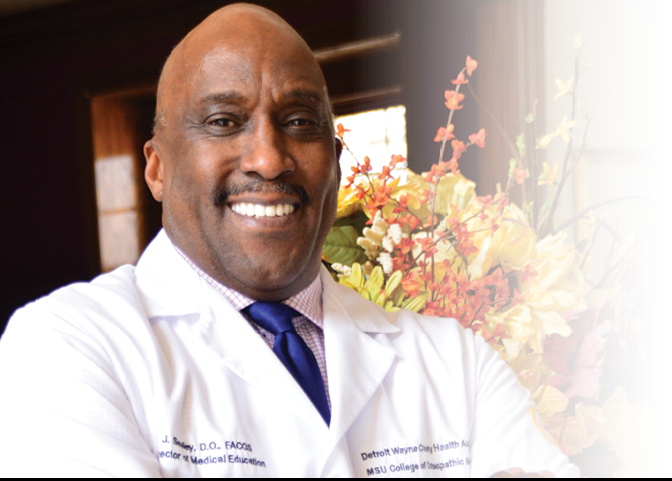
Growing up in a rural North Carolina town during the Civil Rights Movement, a young John W. Sealey witnessed segregation up close and personal. He saw how African Americans were denied basic rights in everything, including quality medical care, simply because of their skin color. He remembers seeing “Colored Only” and “White Only” signage around town, even in his White doctor’s office. Thus, Sealey vowed to one day become a physician and help underserved populations, especially African Americans, find medical equality.
Today, more than four decades later, Dr. John Sealey is one of the nation’s best thoracic and cardiovascular surgeons, Black or White. Additionally, he is the director of medical education for Authority Health, an initiative that encourages physicians from around the country to do their residences in rural areas, as well as in urban centers such as Detroit.
Now in its third year, the program, under the auspices of the Detroit Wayne County Health Authority Teaching Health Center, is operated in partnership with Michigan State University’s College of Osteopathic Medicine under the directorship of Dean William D. Strampel.
Sealey created the program after seeing vast shortages of physicians in Detroit, as well as in rural areas of Michigan. He crafted the program’s framework and, along with Chris Allen, Detroit Wayne County Health Authority’s executive director and CEO, established Authority Health.
“The residence program is going great,” said Sealey. “This year we will graduate our first group of five residents. The program is structured so that when the students graduate they will go into underserved and physician-shorted areas.”
Sealey also enjoys visiting local schools, where he talks and mentors young people, especially African Americans, about careers in the medical field. He loves visiting elementary schools.
“The best time to influence someone about a career is when he or she is in the sixth grade,” Sealey said. “Because by the time they get to high school, the majority, are pretty much set in what they want to do. So I really like to talk with them when they are in elementary school.”
Maybe there’s something special about the sixth grade, because as a youth, this was the grade that Sealey first witnessed segregation in his doctor’s office, punctuated by “Color Only” and “White Only” signs of divide.
“I knew what I saw in my doctor’s office wasn’t right,” recalled Sealey. “That’s when I made the commitment to become a medical doctor. The memory of segregation and those signs are what motivated and pushed me to the next level.”
After high school, Sealey attended North Carolina Central University, where he majored in organic chemistry with a minor in mathematics. He ultimately applied and was accepted into Michigan State University College of Osteopathic Medicine. He graduated in 1976.
Sealey remains on a mission.
“My passion is to increase the number of minorities that will choose medicine as a career,” Sealey said. “We need to get more people of color into the community to treat the community. We don’t have enough of that going on right now. Therefore, we want to make sure that we have enough physicians to take care of the underserved population of Detroit, Wayne County and across the nation.”